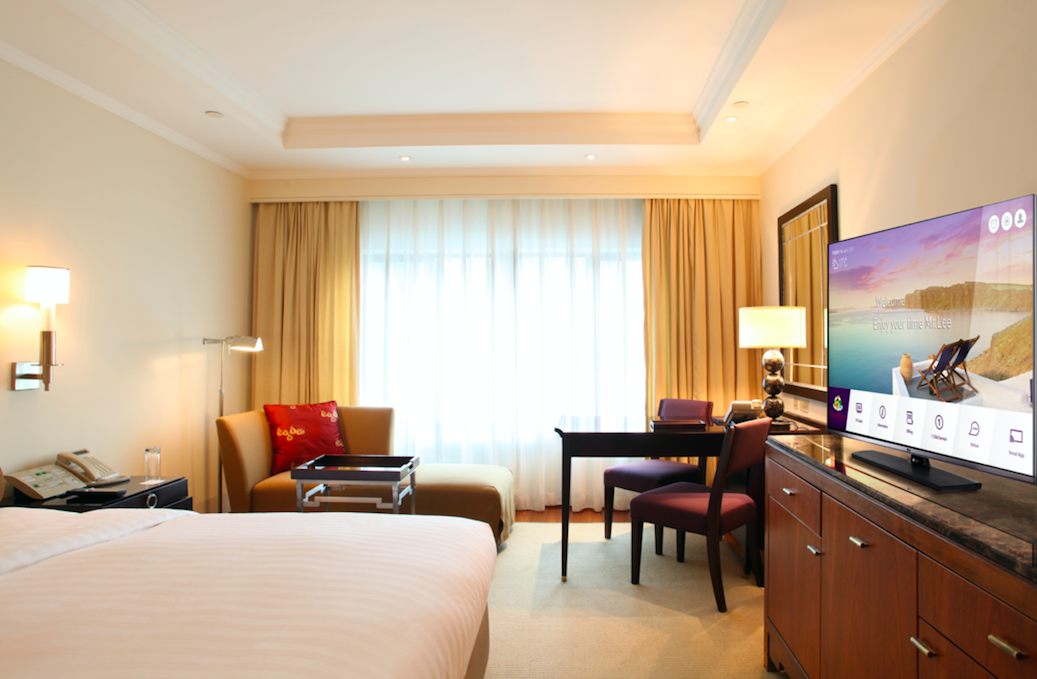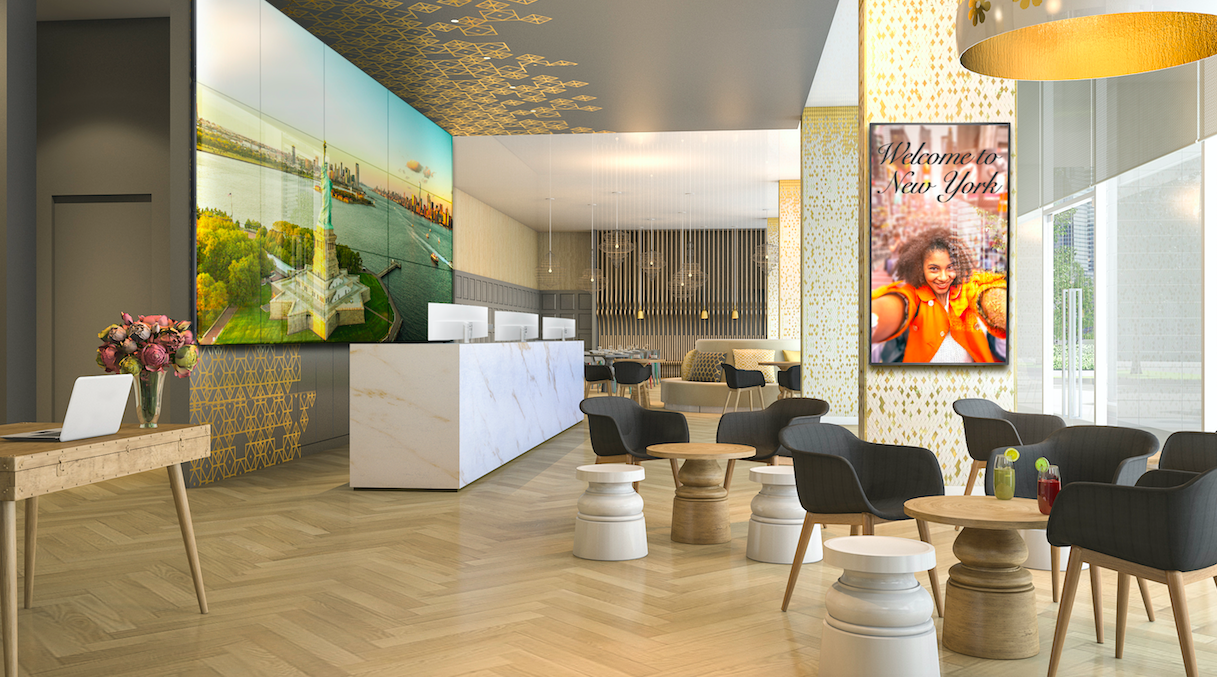There isn’t a corner of society that hasn’t been affected by the COVID-19 pandemic. The hospitality industry, especially, has been hit hard, as people have avoided travel and local governments have regulated restaurants and other venues to ensure health safety. But slowly, as restrictions ease and the public grows more comfortable venturing out, hospitality will make its comeback, and visual communications—digital signage, wayfinding, video walls—will offer a way of doing it safely.
Here are a few things technology providers should consider when positioning display solutions for the hospitality market:
Display Solutions Should be Multifunctional
As hospitality companies figure out how best to welcome customers back to hotels and restaurants, technology manufacturers are creating a new breed of health protocol display solutions for use across many markets. There are now digital wellness kiosks built around LG displays, for example, with integrated thermal scanners to take temperature readings of arriving guests while also communicating important information; occupancy management systems, with sensors for counting and displaying the number of people in a space for social-distancing purposes; and portable, reconfigurable health protocol digital signage displays, for placing and re-placing important messages throughout a facility; and there’s even solutions that are battery powered for areas where there might not be an outlet nearby.
[The Integration Guide to Flat Panel Displays and Mounts]
Although these solutions are designed to support health protocol communications, they should also have a useful life beyond the current pandemic. Therefore, it’s important to choose display platforms built on open architectures, which can be integrated with other compatible systems and adapted to future visual communication applications.
Display Solutions Should be Visible from Varying Distances
Digital signage will be key to visual communication in tomorrow’s hospitality venues, but as long as social distancing is a priority, people will need to get their visual messages from various angles and distances—they may not be gathering around traditional digital signs for the foreseeable future. Fortunately, the economics and performance of micro LED solutions have made LED signage viable for indoor use in lobbies, sports bars, and other hospitality spaces.
As costs fall, when a client requires a digital signage display larger than 75 inches, LED signage should be considered. High-brightness and high-contrast ratios make today’s LED signage technology versatile, and the increasingly finer pixel pitch means guests can see content from closer up—including in spaces with bright ambient light.
Display Solutions Should be Controllable From as Few Control Points as Possible
It goes without saying that commercial displays are no longer dumb screens on walls or in hotel rooms. Hospitality-grade smart displays pair seamlessly with advanced video distribution systems so that, for example, a sports bar can send multiple video sources—in resolutions up to 4K and via standard Cat6 wiring—to multiple screens from a single tablet, panel, or mobile device. What was once an efficient way of managing multiple displays still is, but now it’s much more. Today, being able to control dozens of displays and content sources without touching multiple remote controls or other devices is itself a health protocol solution for the hospitality market.
Hotel TVs Should be Hospitality Display Solutions
Even before the pandemic, hotel brands were upgrading their in-room TVs to smart displays—effectively two-way application platforms that could feature digital signage content, environmental controls (lights, music, climate settings) and BYOD (bring your own device) entertainment. Now, more hospitality brands are seeking to upgrade the guest TV experience.

During the pandemic, there’s been greater interest in extended stay hotels, where guests can make meals without leaving their space, and even motels, where rooms are accessible from outdoors and guests don’t have to enter a lobby or elevator. Whatever the hospitality brand, networked, smart TVs are the future because they help differentiate the in-room experience, meet the media expectations of digital-savvy guests and create a platform for ongoing marketing and communication—including health safety messaging as necessary.
Display Solutions Should Be Safe to Operate
While we’re talking hotel rooms, despite smarter TVs and BYOD entertainment, the in-room remote control is still central to the guest experience. It should be clean. It should have been before, but these days especially the Centers for Disease Control and Prevention is urging daily disinfection of remote controls. That’s precisely why Clean Remote, a compatible, non-porous remote control that’s easy to clean, is rising in popularity. It helps eliminate pathogens and works natively with many of the leading entertainment systems.
Hospitality companies will operate differently than they did before the pandemic, and display solutions can help. Hotels and restaurants were eager adopters of audiovisual technology before COVID-19 and will continue to be after, but it’s important to work with clients to understand use cases and how they support safer operation. And to the extent that display solutions help them open safely today while supporting a rich guest experience tomorrow, so much the better.

